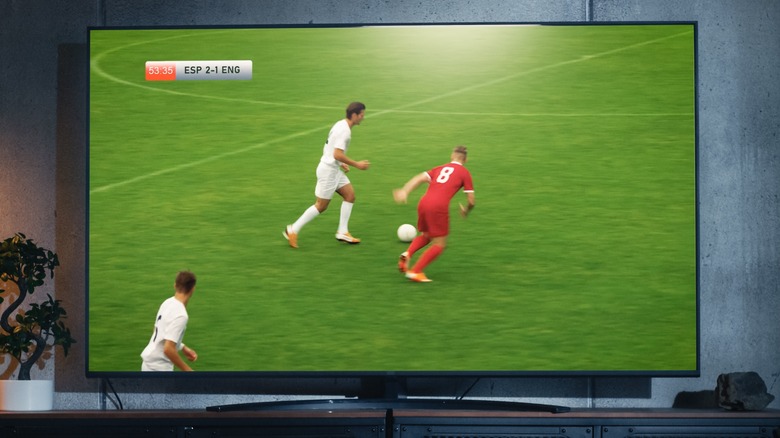Why TVs Are Measured Diagonally
For those of you too young to remember, TVs used to be big, boxy things crammed full of cathode ray tubes. Understandably, arranging a living room around such a thing was a bit more of an endeavor, because you had to consider how far the screen jutted out from the innards, as opposed to modern flat screens that you can just hang on a wall. This is why the oldest CRT TVs were measured in their overall diameter – you needed to know how big the whole thing was, and whether it would fit on the little table or wooden entertainment cabinet you set aside for it.
Nowadays, though, TVs are measured primarily by the length of the screen, diagonally across. It's a much simpler measurement than determining the diameter of the entire device, but how exactly did that choice of measurement come about? It's a trick of practicality, one meant to best convey to a potential buyer how much space their new TV will take up in a room without overwhelming them with numbers.
Diagonal inches
When tube TVs started to become more rectangular in shape, the diagonal measurement of the screen became the largest observable length on the device, rather than the complete diameter. This is why diagonal measurements became the standard — if you want to adequately illustrate how big something is to a customer, you give them the biggest number you've got.
TVs are measured from the top-left to the bottom-right in inches. Interestingly, even in countries that use the metric system, TVs are all measured in inches rather than centimeters. There's a good reason for this — inches are more flexible than centimeters when it comes to providing static statistics. Let's say, for instance, you've got a TV with a 48.5-inch display, plus a half-inch bezel. Round that up to a clean 49 inches, and the TV appears bigger than it actually is. It's a nifty marketing tactic, though it's also helpful for keeping TVs organized in uniform classes. If every single TV was differentiated down to its minute centimeter differences, there wouldn't be enough room in a Best Buy to give them their own dedicated shelves.
Super high-definition curved screen TVs are still measured diagonally for the purpose of classification, though in the event the curved design becomes a universal norm, admittedly unlikely as that is, we could see another measurement system overhaul in our lifetime. Who knows, we could see a return of diameter measurements someday.

